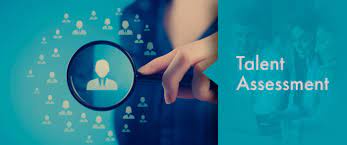In today's competitive job market, recruiters face numerous challenges in identifying and selecting the right candidates for their organizations. The traditional methods of hiring, such as resumes and interviews, often fall short in providing a comprehensive evaluation of a candidate's true potential.
This is where talent assessment tools come into play. Talent assessment tools offer valuable insights into a candidate's abilities, skills, personality traits, and potential for success in a particular role.
In this blog, we will explore the role of talent assessment tools in creating a balanced workforce and how they can benefit recruiters in their hiring processes.
Understanding Talent Assessment Tools
Before delving into the significance of talent assessment tools, it is important to understand what they are. Talent assessment tools are scientifically designed instruments that measure various aspects of a candidate's suitability for a specific job role. These tools utilize a combination of assessments, tests, and questionnaires to evaluate a candidate's cognitive abilities, personality traits, behavioral tendencies, and relevant skills. By providing objective data and insights, these tools enable recruiters to make informed decisions and identify candidates who possess the right competencies for a particular role.
Overcoming Biases in Hiring
One of the major challenges faced by recruiters is unconscious bias in the hiring process. Traditional methods like resumes and interviews are susceptible to biases based on factors such as gender, race, or educational background. Talent assessment tools offer an objective and standardized approach to evaluating candidates, reducing the influence of biases. By focusing on job-related competencies rather than personal characteristics, these tools ensure a fair and inclusive selection process. This, in turn, contributes to creating a more balanced and diverse workforce.
Identifying High-Potential Candidates
Identifying high-potential candidates is crucial for organizations looking to build a strong talent pipeline. Talent assessment tools provide valuable insights into a candidate's potential by assessing their cognitive abilities, problem-solving skills, and learning agility. These tools help recruiters identify candidates who not only possess the necessary skills for the current role but also demonstrate the potential to grow and take on more challenging responsibilities in the future. By accurately identifying high-potential individuals, organizations can ensure a balanced workforce that is equipped for long-term success and growth.
Assessing Cultural Fit
Cultural fit is an essential aspect of building a cohesive and productive workforce. Organizations thrive when employees align with the company's values, mission, and work culture. Talent assessment tools offer recruiters a means to assess a candidate's cultural fit by measuring their personality traits, work preferences, and values. By matching the candidate's profile with the organization's culture, recruiters can ensure that new hires will integrate well into the existing team, enhancing collaboration and overall employee satisfaction.
Enhancing Team Dynamics
Creating a balanced workforce requires assembling teams that complement each other's strengths and weaknesses. Talent assessment tools can play a vital role in enhancing team dynamics by identifying the unique skill sets and personality traits of individual team members. By understanding the strengths and weaknesses of team members, recruiters can create teams that are well-rounded, diverse, and synergistic. The insights provided by talent assessment tools can aid in forming cohesive teams that work harmoniously towards achieving common goals.
Increasing Employee Retention
Employee turnover can be a significant cost for organizations, both in terms of time and resources. Talent assessment tools like Testlify can contribute to reducing employee turnover rates by ensuring that candidates are not only suitable for the current role but also aligned with long-term career opportunities within the organization. By assessing a candidate's motivations, aspirations, and career goals, recruiters can identify individuals who are likely to be engaged and committed to the organization's growth. By making informed hiring decisions, organizations can improve employee retention and maintain a balanced workforce.
Improving Organizational Performance
A balanced workforce is a key driver of organizational performance. Talent assessment tools provide valuable data and insights that can be used to identify skill gaps, address training and development needs, and make informed decisions about talent acquisition and succession planning. By ensuring that the right people are in the right roles, organizations can optimize their human capital, enhance productivity, and achieve sustainable growth.
Conclusion
Talent assessment tools have revolutionized the hiring process by providing recruiters with a data-driven and objective approach to evaluating candidates. These tools not only help overcome biases but also aid in identifying high-potential individuals, assessing cultural fit, enhancing team dynamics, and improving employee retention. By utilizing talent assessment tools effectively, recruiters can create a balanced workforce that is diverse, productive, and well-equipped for future challenges. Embracing these tools is a step towards building a thriving organization in the ever-evolving world of work.


No comments yet